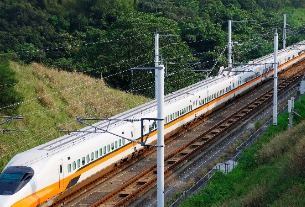Across Asia and Europe, high-speed rail is providing a competitive alternative to air travel on the same routes, in terms of price and the all-important barometer of time. Put that together with the environmental benefits that flow from not burning jet fuel, and staying on the ground begins to make more sense for travelers who would otherwise trudge to the airport.
Speedy trains and planes are generally competitive until your travel plans extend beyond 1,000 kilometers (621 miles), at which point travelers consider flying superior for time savings, according to an overview of academic research by the Journal of Advanced Transportation. But new technologies may push that boundary in the years and decades to come. The chart below gives examples of key global routes where the two are currently comparable.
The new rail industry is seeing its most vibrant growth in China, which also has the world’s largest high-speed network, the fastest trains and the greatest ambitions for future expansion. One of the world’s busiest routes, Beijing to Shanghai, features the new domestically built Fuxing high-speed train, now with a top allowed speed of 218 miles per hour (351 kilometers per hour). That speed increase cut the 775-mile (1,247 kilometer) trip to 4 hours, 28 minutes on a route that has about 100 million rail passengers annually, according to Chinese news service Xinhua.
In 2015, 910 million Chinese traveled by all forms of rail—more than twice the 415.4 million who flew, according to the journal article. Unsurprisingly, the future of train technology resides in China. The first magnetic-levitation, or maglev train, which can travel as fast as 267 mph (430 kph), operates in Shanghai; engineers are researching future maglev trains that could travel at a stunning 373 mph (600 kph), an achievement that could thoroughly upend the current dynamic between air and ground travel.
Over time, Chinese airlines and high-speed trains have generally evolved so that fares and service classes are comparable, said Yu Zhang, an assistant professor of civil and environmental engineering at the University of South Florida and one of the journal report’s authors. In their early days, Chinese high-speed rail operators sought to emulate airlines in terms of attendant training, with fares that were generally too high to spur much demand, she said. Since then, train fares have dropped.
Read original article




